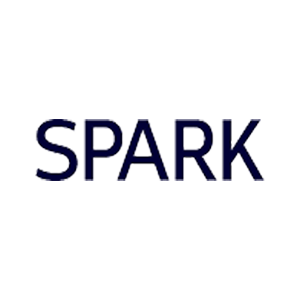Redefining Health Benefits: How HRAs Could Be the Right Answer for Nonprofits

This article was written by Take Command, an ADP third party provider.
In times of limited resources, nonprofits may be tempted to cut back on offering health benefits. Innovative solutions like a Health Reimbursement Arrangements (HRA) might be the key to balancing employee needs with financial efficiency.
According to recent data, almost two million nonprofit organizations operate in the U.S. – contributing more than $1 trillion to the nation's economy. Each day, in the communities they serve, nonprofit employees work to help achieve their group's goal(s).
However, decreasing resources and tighter budgets can create challenges for nonprofits. For instance, sustaining a high level of employee engagement, while retaining top talent, is no easy task. In fact, as a recent study found, more than three-in-four nonprofit leaders surveyed are concerned that staff burnout is "at least slightly" impacting their organization's ability to achieve its mission.
How can nonprofits stay competitive without having the same resources as most other employers? The answer may lie in rethinking their traditional employee healthcare offerings. Newer plan options, such as Health Reimbursement Arrangements (HRAs), could provide more comprehensive solutions for employees and their families – helping nonprofits keep their best workers without breaking the organization's budget.
What are HRAs?
HRAs are employer-funded plans that allow organizations to reimburse their employees tax-free for basic healthcare expenses, including individual insurance premiums and certain out-of-pocket costs. Unlike traditional group health insurance, HRAs aren't required to pay a fixed premium to a provider. Instead, they can choose a variety of coverage options and set a budgeted allowance that is tailored to their employees' healthcare needs.
4 key benefits of HRAs for nonprofits
"Health benefits like HRAs aren't just another expense," says Jack Hooper, CEO, Take Command. "They're an investment in the people you need to power your team's mission to success."
According to the Nonprofit HRA Report from Take Command, here are a few important reasons for nonprofits to consider offering an HRA:
1. HRAs provide efficient coverage within a realistic budget
One of the primary advantages of the HRA model is the ability to manage your organization's health benefit offerings within a reasonably predictable budget. Unlike the traditional group health plan, HRAs allow nonprofits to set a fixed amount to reimburse their employees for health expenses each year. By doing this, it may help avoid dreaded annual premium increases and other unforeseen expenses.
2. HRAs offer more flexible and inclusive benefits
HRAs could empower nonprofits to offer a health benefits package that caters to their workforce's diverse needs. Various demographics, family structures, and lifestyle preferences can be accommodated – allowing employees to select individual health insurance plans or services that best suit their circumstances. This inclusivity makes the overall benefits package more attractive to workers and their families.
3. HRAs enhance existing recruitment and retention programs
Competitive benefits packages are a must in today's business environment. At nonprofits, salaries may never be the attraction. However, a customized benefits package could show current and prospective employees that you value their well-being and offer accessible healthcare options.
4. HRAs create reinvestment opportunities to further your mission
By reducing spending on health benefits, nonprofits can channel more resources into their core mission. In a business model where fiscal responsibility is vital, the cost savings achieved by using an HRA structure can be redirected into expanding programs, enhancing services, or supporting larger organizational goals.
Why now for nonprofits and HRAs?
HRAs could be the right fit for nonprofits to stay competitive in today's economy. After all, they can help leaders move away from one-size-fits-all coverage to a more modern health benefits model that aligns with both their employees' needs and their organization's mission.
Discussing your needs with a licensed insurance broker, agent, and other professionals can help you to stay compliant with laws and regulations, as well as get the most out of your insurance plans.
"At the end of the day, every dollar as well as every employee at a nonprofit are extremely important," concludes Hooper. Show your employees that you care, especially about their health and well-being, and they'll be more inclined to be loyal partners in your shared mission – something everyone can benefit from."
To learn more about protecting your employees and your business with insurance, check out ADP® affiliate, Automatic Data Processing Insurance Agency, Inc. (ADPIA®), for the latest in health benefits offerings.
Automatic Data Processing Insurance Agency, Inc. (ADPIA) is an affiliate of ADP, Inc. All insurance products will be offered and sold only through ADPIA, its licensed agents or its licensed insurance partners; One ADP Blvd. Roseland, NJ 07068. CA license #0D04044. Licensed in 50 states. Certain services may not be available in all states with all carriers. Some carriers may charge an additional fee for services. This information is not intended as tax or legal advice. If you have any questions, contact a tax or legal professional. ADP, the ADP logo and ADPIA are registered trademarks of ADP, Inc. Copyright © 2025 ADP, Inc. All rights reserved.



